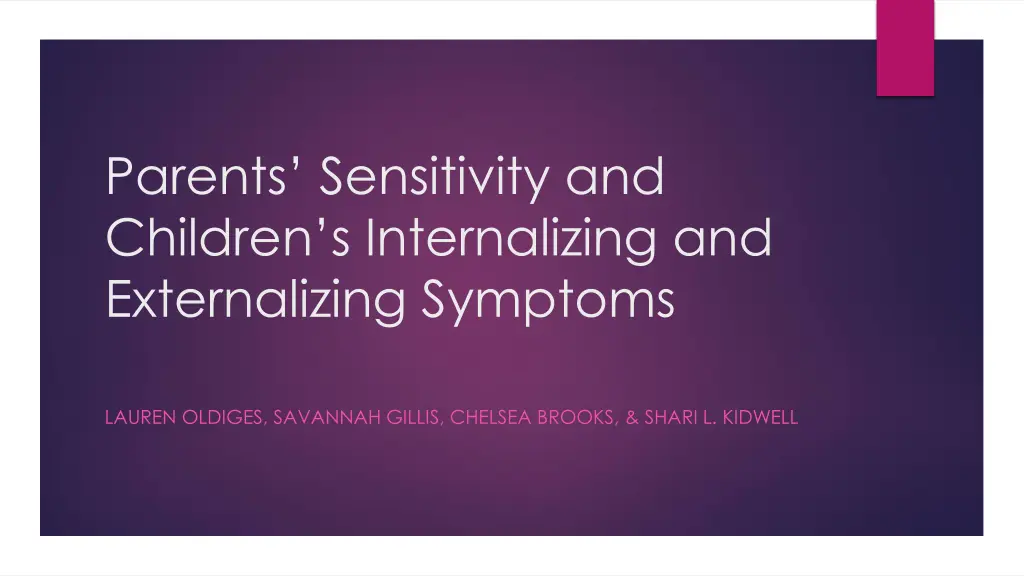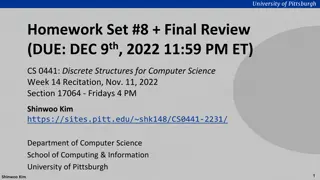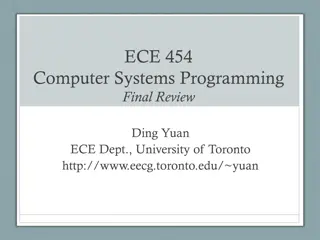
Understanding Parental Sensitivity and Children's Symptoms
Explore the relationship between parental sensitivity and children's internalizing and externalizing symptoms. Learn how maternal sensitivity impacts child psychological vulnerability, internalizing symptoms, and externalizing behaviors. Discover the hypothesis, methods, and findings of the study conducted by Lauren Oldiges, Savannah Gillis, Chelsea Brooks, and Shari L. Kidwell.
Download Presentation

Please find below an Image/Link to download the presentation.
The content on the website is provided AS IS for your information and personal use only. It may not be sold, licensed, or shared on other websites without obtaining consent from the author. If you encounter any issues during the download, it is possible that the publisher has removed the file from their server.
You are allowed to download the files provided on this website for personal or commercial use, subject to the condition that they are used lawfully. All files are the property of their respective owners.
The content on the website is provided AS IS for your information and personal use only. It may not be sold, licensed, or shared on other websites without obtaining consent from the author.
E N D
Presentation Transcript
Parents Sensitivity and Children s Internalizing and Externalizing Symptoms LAUREN OLDIGES, SAVANNAH GILLIS, CHELSEA BROOKS, & SHARI L. KIDWELL
Introduction Parenting Sensitivity Sensitivity is defined as a parent s ability to notice a child s signals, interpret them correctly, and respond to them promptly (Mesman, & Emman, 2013). The CARE-index (Crittenden, 1981) measures caregiver sensitivity through assessing the fit between caregiver and child (Mesman & Emman, 2013). Greater maternal sensitivity is associated with decreased child psychological vulnerability (Svanberg, Mennet, & Spieker, 2010).
Introduction (cont.) Children s Internalizing Symptoms Internalizing symptoms are directed inward and can consist of social withdrawal, loss of interest, anxiety, and somatic complaints. Anxiety and somatic complaints appear to be influenced by interpersonal relationships (Liu, Chen, & Lewis, 2011). Children s internalizing symptoms show an inverse relationship with social skills and emotional intelligence (Olivier, Morin, Langlois, Tardif- Grenier, & Archambault, 2020)
Introduction (cont.) Children s Externalizing Symptoms Externalizing symptoms are directed out toward their environment and can consist of aggression, delinquency, deceit, and hyperactivity. Decreased maternal supportive parenting predicted the increase of child externalizing symptoms (Coe, Davies, & Sturge-Apple, 2020). Children exhibiting severe externalizing symptoms showed poor functioning across multiple life domains at age 18 (Wertz, 2018).
Hypothesis Parents who are more sensitive to their children s emotional cues will have children with lower internalizing and externalizing symptoms.
Methods Participants 32 Families Average Age: 4.5 17 Males and 15 Females Measures Sensitivity When children were 4 years old, they participated in the Strange Situation separation-reunion procedure (Ainsworth, Blehar, & Waters, 1978). We coded parental sensitivity from the procedure, using the Care Index (Crittenden, 2006/2016).
Methods (cont.) Puppet Interview The Puppet interview was developed for the study to collect children s self-report of internalizing and externalizing symptoms. Measelle & colleagues (1998) informed the procedure. Children were interviewed using two puppets, the puppets made forty-eight positive or negative statements about themselves and children were asked which puppet s statement reflected themselves. Child behavior Checklist The CBCL (Achenbach & Rescorla, 2001) consists of 113 questions which are scored on a 3-point Likert scale Parents completed this measure to record their child s internalizing and externalizing symptoms.
Results We have partial support for our hypothesis. Parents with less sensitivity tend to report more externalizing symptoms for their children. Parents with less sensitivity also tended to have children who reported more internalizing symptoms. Puppet Internalizing Puppet Externalizing CBCL Internalizing CBCL Externalizing Sensitivity -.36(*) -.23 -.31 -.44(**) * significant at p<0.05 ** significant at p< .01
Results (cont.) Though not formally a hypothesis, we thought the association between internalizing and externalizing symptoms were important. Interestingly, we did find that our two significant findings were also inter-correlated. Kids who reported more internalizing symptoms on the puppet interview tended to have parents who reported more externalizing symptoms on the CBCL. Puppet Internalizing Puppet Externalizing .59(**) CBCL Internalizing .21 CBCL Externalizing .44(**) Puppet Internalizing Puppet Externalizing CBCL Internalizing .14 .31(*) .73(***) * significant at p<0.05 **significant at p<.01 *** significant at p<.001
Discussion We found partial support for our hypothesis Parents found to have lower sensitivity to their kids needs reported that their kids had greater externalizing symptoms than parents found to have higher levels of sensitivity Parents found to be less sensitive to their kids needs were more likely to have kids who reported more internalizing symptoms than the kids of more sensitive parents were. It s important to note that the children who reported high internalizing symptoms also had parents who reported more externalizing problems. One limitation was our small sample size of 32 families. It is possible other indicators of internalizing and externalizing would be significant if we had greater power.
Discussion (cont.) Future directions Finish coding for all 54 families Focus on asking kids what they feel and not just rely on parental reports, because kids and parents don t always report the same symptoms Explore the role parental sensitivity has on their kids adjustment and their internalizing and externalizing symptoms. Expand training and early interventions that strive to increase parental sensitivity and offer services to struggling families. We had many families scoring in the inept range, suggesting they could benefit from such services.
References Coe, J., Davies, P., Hentges, R., & Sturge-Apple, M. (2020). Understanding the nature of associations between family instability, unsupportive parenting, and children's externalizing symptoms. Development and Psychopathology, 32(1), 257-269. doi:10.1017/S0954579418001736 Liu, J., Chen, X., & Lewis, G. (2011). Childhood internalizing behaviour: analysis and implications. Journal of psychiatric and mental health nursing, 18(10), 884 894. https://doi.org/10.1111/j.1365-2850.2011.01743.x Mesman, J., & Emman. R.A.G. (2013). Mary Ainsworth s legacy: a systematic review of observational instruments measuring parental sensitivity. Attachment and Human Development, 15, 485 506. Olivier, E., Morin, A. J. S., Langlois, J., Tardif-Grenier, K., & Archambault, I. (2020). Internalizing and externalizing behavior problems and student engagement in elementary and secondary school students. Journal of Youth and Adolescence, 49(11), 2327 2346. https://doi.org/10.1007/s10964-020-01295-x Svanberg, P. O., Mennet, L., & Spieker, S. (2010). Promoting a secure attachment: A primary prevention practice model. Clinical Child Psychology and Psychiatry, 15, 363-378. Wertz, J., Agnew-Blais, J., Caspi, A., Danese, A., Fisher, H. L., Goldman-Mellor, S., . . . Arseneault, L. (2018). From Childhood Conduct Problems to Poor Functioning at Age 18 Years: Examining Explanations in a Longitudinal Cohort Study. Journal of the American Academy of Child & Adolescent Psychiatry,57(1), 54-60. doi:10.1016/j.jaac.2017.09.437





















